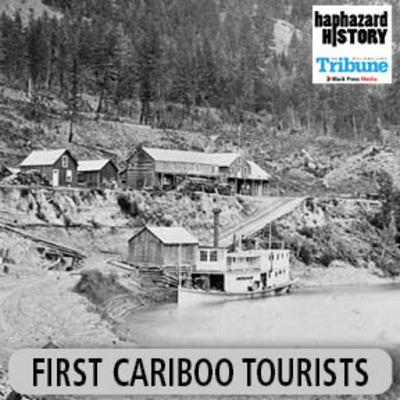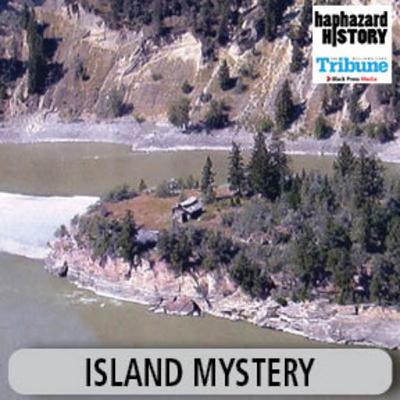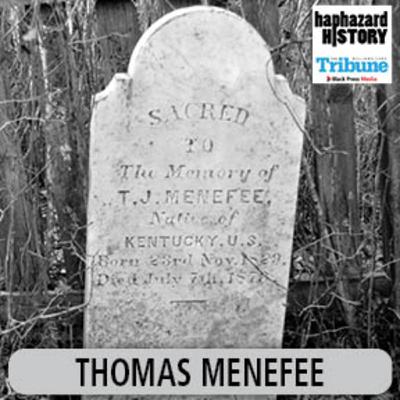Discover Haphazard History
Haphazard History

Haphazard History
Author: Black Press Media
Subscribed: 0Played: 0Subscribe
Share
© 2024 Black Press Media
Description
The podcast version of the popular newspaper column ”The Haphazard History of the Cariboo Chilcotin” in the Williams Lake Tribune.
8 Episodes
Reverse
The Hudson’s Bay Company had known about gold finds on the Fraser River since early in 1856, and they had kept word of this to themselves, quietly sending gold which had come in on trade to Fort Langley for safekeeping. However, when the company had amassed some 800 oz. of gold, they sent it to San Francisco to be refined, and the secret was out.
Some 30,000 prospectors and entrepreneurs passed through Victoria and Fort Langley during the spring and summer of 1858. James Douglas had three major concerns. First, since most of the newcomers were American, he feared that they would make an attempt to take over the territory in the name of the U.S. Secondly, he worried that there was insufficient policing for the influx of people, some of whom were rather shady characters.
The third problem was that Douglas’ colonial government was virtually broke. A colonial Gold Escort was eventually formed for the sole purpose of carrying gold from the current diggings to government assay offices at New Westminster or Victoria.See omnystudio.com/listener for privacy information.
The earliest recorded tourism visit to the Cariboo was by two English gentlemen, Lord Viscount Milton and Doctor Walter B. Cheadle.
Lord Milton was a young, willful aristocrat who had decided that he wanted to see Canada for himself, and Dr. Cheadle was retained by the Milton family to escort the impetuous young man to see to his health, and to ensure that no harm came to him.See omnystudio.com/listener for privacy information.
About a quarter mile south of Rudy’s Bridge, right in the middle of the Fraser River, there lies a small island with a steep, rocky shoreline on three sides and a gradual rocky beach in its lee.
It’s accessible in winter, and sometimes when the river is really low, but most of the time it’s surrounded by fast-flowing water.
Actually, it is quite an unremarkable island, not unlike many others up and down the river, but this little piece of land is known by the locals as the Mad Russian’s Island, and therein lies a story.See omnystudio.com/listener for privacy information.
For more than 50 years, from 1863 until 1917, the red and yellow B.C. Express Company’s stagecoaches transported mail, express, and passengers from Yale to Barkerville, an 800 mile return trip.
With the completion of the CPR Railway in 1886, however, the new community of Ashcroft became the major southern terminus of the stagecoach route. To those of us who grew up on a diet of western movies, the term “stagecoach” brings to mind images of masked men on horses waiting in Ambush, holding up terrified passengers and galloping off with sacks of gold.See omnystudio.com/listener for privacy information.
Thomas Menefee, according to his grave marker, was born in Kentucky, but some historians believe he was a native of Missouri. He migrated west to the California goldfields in the early 1850’s, but the land was already staked and that gold rush was largely finished. Menefee joined the many goldseekers moving northwards, prospecting the creeks and rivers along the way. He arrived in southern B.C. in 1858 with one of the first groups of men searching for gold in the Okanagan region.See omnystudio.com/listener for privacy information.
This latest instalment of Haphazard History, written by Barry Sale, revisits the historic Barkerville fire of 1868.
During its peak, the gold rush town of Barkerville had more than 10,00 residents who lived in wooden buildings that were clustered in a haphazard manner along its main street in the Central Interior.
On September 16, 1868 the saloon caught fire and then the end of the day a total of 116 buildings were destroyed in the blaze. Fortunately there had been no loss of life, but property losses were estimated to be about $700,000, or around $12.7 million in today’s prices.See omnystudio.com/listener for privacy information.
The iconic bridge over the Fraser River some 25 kilometres west of Williams Lake on Highway 20, sometimes referred to as “the gateway to the Chilcotin” has an interesting and colourful history.
For eons, a natural slowing of the current in that area of the river made for a suitable crossing site. When the river is at its normal height, the current is usually peaceful enough for boats to cross, and when the flow of water is low, there are spots where animals can easily swim across.
See omnystudio.com/listener for privacy information.
In August of 1866, Dally accompanied the Governor of the Colony, Arthur Edward Kennedy, aboard the H.M.S. Scout as they circumnavigated Vancouver Island and stopped off at many First Nations villages. His photographs taken on this trip especially those from Fort Rupert (Port Hardy), Comox, Cowichan, and Nanaimo were outstanding and continue to provide valuable anthropological evidence even today.
The following year, in 1867, Dally made a month-long trip up the Cariboo Wagon Road to Barkerville and the Cariboo gold fields. He took photographs all along the route as well as recording images of Barkerville itself and the mining operations in the vicinity of Williams Creek.
See omnystudio.com/listener for privacy information.











